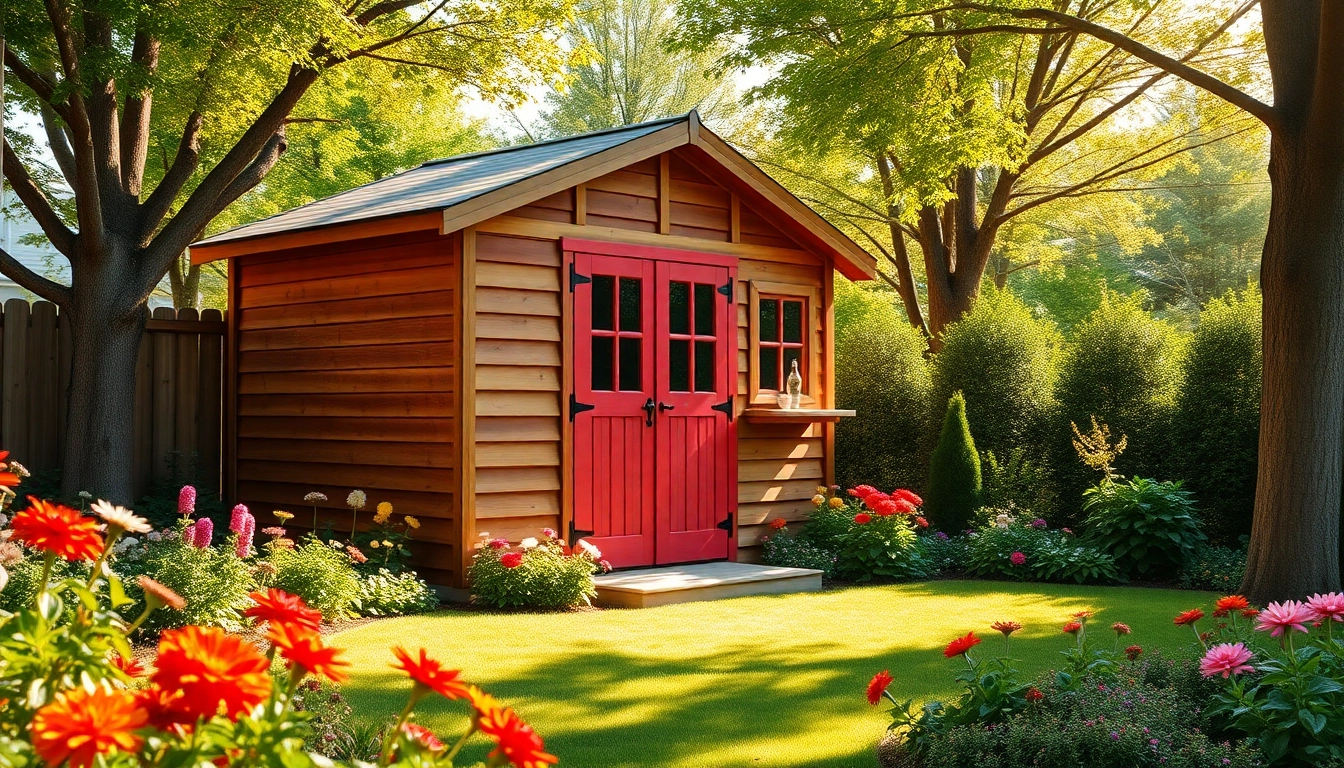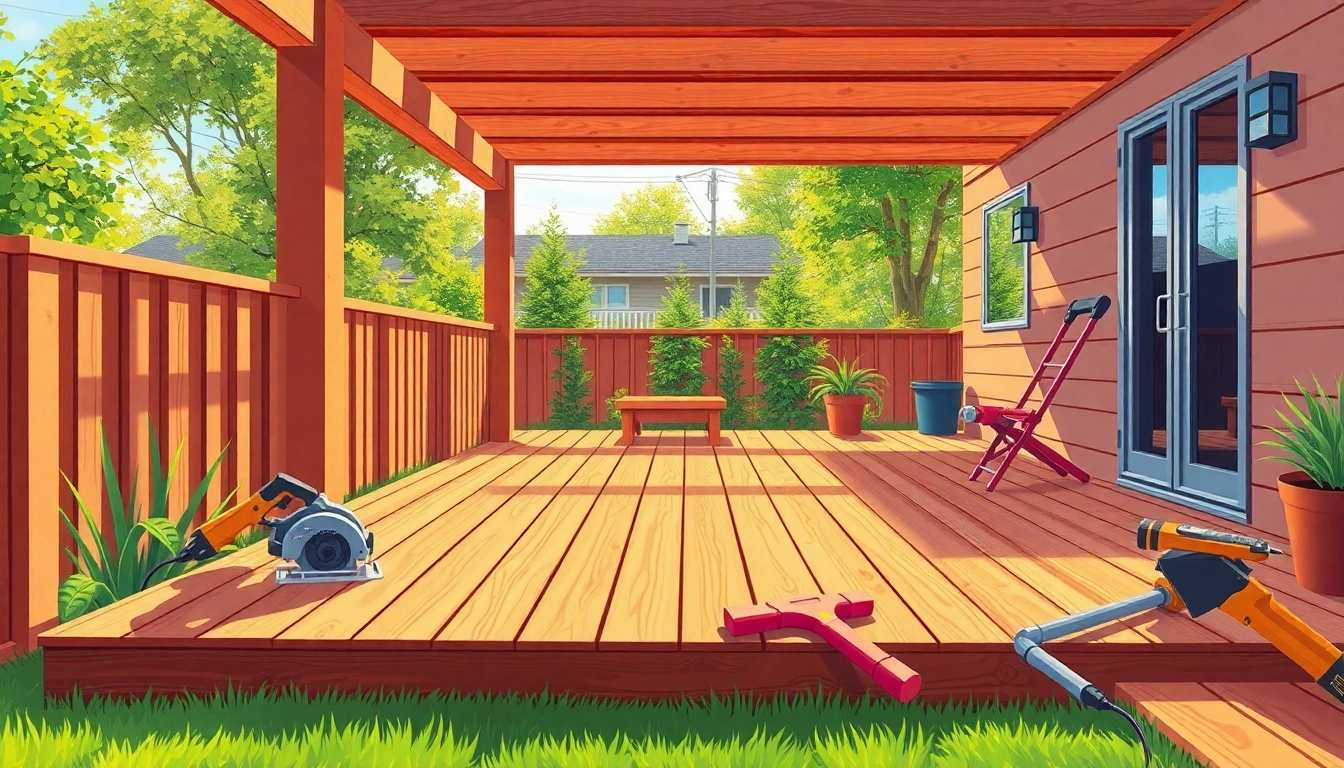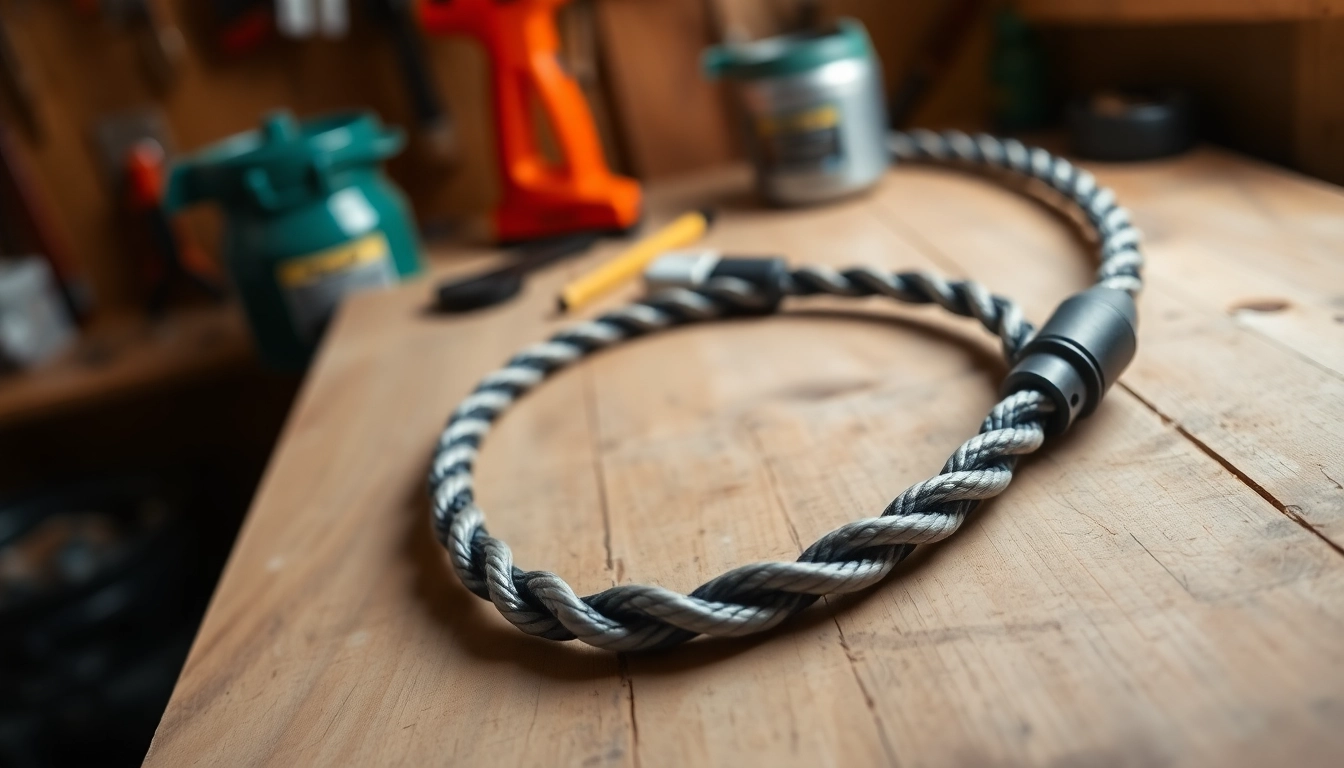Understanding Custom Storage Sheds
Definition and Benefits
Custom storage sheds are versatile outdoor structures designed to suit unique storage needs and aesthetic preferences. Unlike standard sheds, custom models allow homeowners to select dimensions, materials, styles, and additional features tailored specifically to their requirements. A custom storage shed can serve multiple purposes, from a simple garden tool storage unit to a fully equipped workshop that accommodates various hobbies and interests.
The benefits of custom storage sheds are numerous. First and foremost, they provide practical solutions for organization, helping to declutter homes and gardens by offering designated spaces for tools, outdoor equipment, or recreational items. Additionally, these structures can enhance outdoor aesthetics, complementing the existing landscape or home design. Finally, custom sheds can increase property value, making them a worthwhile investment for homeowners.
Types of Custom Storage Sheds
When considering a custom storage shed, it is essential to recognize the various types available, which cater to a wide range of needs:
- Garden Sheds: Typically smaller structures used for storing gardening tools, equipment, and supplies. They often feature shelves and small workspaces.
- Workshops: Larger sheds that can house power tools, workbenches, and provide a comfortable environment for various DIY projects.
- Utility Sheds: Designed for multipurpose use, these sheds can store both tools and larger items such as lawnmowers and bicycles.
- Playhouses: Custom-designed sheds that double as children’s play areas, often featuring whimsical designs and safe play spaces.
- Storage Barns: Larger, barn-style structures providing ample storage for farm equipment, supplies, and even vehicles.
Key Features to Consider
When planning the design of a custom storage shed, several key features should be prioritized:
- Size: Determine the required dimensions based on what will be stored inside and the available yard space.
- Material: Choice of materials affects both the aesthetic finish and insulation qualities. Options include wood, metal, vinyl, and composite materials.
- Roof Style: Various options like gable, hip, or flat roofs influence water drainage and overall shed appearance.
- Windows and Ventilation: Adequate ventilation and natural light can enhance usability, especially for workshops and playhouses.
- Access: Considerations for door positions, sizes, and types (single, double, roll-up) are crucial for functionality.
Designing Your Custom Storage Shed
Planning the Layout and Dimensions
Before construction begins, careful planning of the layout and dimensions of a custom storage shed is essential. Homeowners should measure available space, accounting for any potential zoning laws or HOA regulations that may dictate shed placement and size. A well-thought-out plan not only ensures that the structure fits the intended use but also maximizes efficiency in accessibility and storage.
Additionally, creating a floor plan can help visualize how tools, equipment, and shelving will be organized within the shed. Consider vertical storage solutions to optimize space, using wall-mounted racks and shelving units to keep the floor clear and organized.
Material Selection for Durability
The selection of appropriate materials is critical for the longevity and functionality of custom storage sheds. Here are some common materials used and their benefits:
- Wood: A classic choice that provides aesthetic value and insulation but requires regular maintenance to prevent rot and insect damage.
- Metal: Generally more durable and resistant to fire; however, metal can conduct heat and may require insulation for temperature-sensitive items.
- Vinyl: Low-maintenance and resistant to rot and pests, making it an excellent option for those looking for minimal upkeep.
- Composite Materials: These are engineered for durability and moisture resistance, combining wood and plastic benefits for a long-lasting solution.
Aesthetic Choices: Color and Style
The external appearance of a custom storage shed can significantly impact the overall aesthetic of a property. Homeowners should consider how the shed’s color and style complement the home and landscape. Options can range from rustic barn styles to modern designs with clean lines and bold colors. Utilizing paint, siding materials, and roofing options can add character to the shed while ensuring it remains functional.
Incorporating architectural elements such as overhangs, decorative windows, and flower boxes can enhance the visual appeal and encourage creativity in outdoor spaces.
Building Process of Custom Storage Sheds
DIY vs. Hiring Professionals
Deciding whether to build a custom storage shed as a DIY project or hire professionals hinges on various factors, including budget, skill level, and time constraints. For those with construction experience, DIY can be a rewarding venture that saves costs while offering the flexibility of personal design choices. However, it is essential to realistically assess capabilities and local building codes.
Hiring professionals can simplify the process by ensuring that local regulations are met, and the structure is built to last. This option often comes with warranties and professional guidance on materials and design, making it a preferable choice for homeowners seeking a hassle-free experience.
Essential Tools and Materials Needed
For a successful DIY shed project, having the right tools and materials is essential. Basic tools may include:
- Measuring tape
- Level
- Circular saw
- Power drill
- Hammer
- Safety gear (gloves, goggles, dust mask)
The materials needed will depend on the design but can include:
- Wood or metal framing
- Siding materials (e.g., plywood, vinyl)
- Roofing materials (shingles, metal sheets)
- Flooring (wood, concrete) and insulation options
Steps to Build Your Custom Shed
Whether taking on a DIY project or working with professional builders, following a clear process is essential. The main steps involved in building a custom storage shed include:
- Planning and Design: Finalize plans, obtain the necessary permits, and purchase materials.
- Preparation: Mark the installation site, clear the area, and lay down a foundation if necessary (concrete slabs or crushed stone are popular choices).
- Framing: Construct the frame according to the design, ensuring everything is level and secure.
- Siding and Roofing: Apply siding materials, followed by roofing, ensuring proper ventilation is in place.
- Install Features: Add windows, doors, and any other desired features such as shelving, hooks, or workbenches.
- Finishing Touches: Paint or stain the shed, install guttering if applicable, and landscape the surrounding area.
Cost Factors for Custom Storage Sheds
Average Pricing for Different Sizes
The cost of custom storage sheds can vary widely depending on size and materials used. On average, small garden sheds may start around $2,500, while larger utility or workshop sheds can exceed $10,000. For more customized features, prices can escalate, reaching upwards of $20,000 or more for luxurious designs and high-quality materials.
Influences on Shed Costs: Materials and Design
Several factors influence the overall cost of a custom storage shed, including:
- Material Choice: Premium materials such as hardwood or specialized composite materials increase the total cost but can improve durability and visual appeal.
- Size and Height: Larger sheds require more materials and labor, thus increasing expenses.
- Design Complexity: Unique architectural features and customization options can raise costs significantly.
- Location: Installation costs can vary by region depending on labor costs and access to suppliers.
Budgeting Tips for Custom Projects
To effectively budget for a custom storage shed, consider the following tips:
- Assess Needs: Determine the essential features necessary for your shed to avoid unnecessary expenditures.
- Research Materials: Compare costs of various materials and weigh their longevity against initial pricing.
- Get Multiple Quotes: If hiring professionals, seek multiple estimates to ensure competitive pricing.
- Plan for Contingencies: Set aside a percentage of the budget for unforeseen costs that may arise during construction.
Maintenance and Upkeep of Your Shed
Seasonal Maintenance Tips
To ensure the longevity of your custom storage shed, regular maintenance is vital. Seasonal checks should involve:
- Inspecting the roof for damaged shingles or leaks
- Cleaning gutters and ensuring drainage systems function correctly
- Checking for signs of pests, particularly in wooden structures
- Re-painting or staining to protect surfaces from weather damage
Enhancements for Longevity
Enhancing the longevity of your storage shed can be achieved through various methods:
- Treating Wood: Regularly treating wooden surfaces decreases the risk of rot and insects.
- Adding Insulation: Insulating a shed can enhance temperature control, protecting sensitive equipment stored inside.
- Investing in Quality Fasteners: Using high-quality screws, nails, and fixtures can dramatically improve structural integrity.
When to Consider Repairs or Upgrades
Knowing when to repair or upgrade aspects of your shed is essential for maintaining its functionality and aesthetic appeal. Indicators that upgrades may be necessary include:
- Visible rot or structural damage
- Water leaks or mold presence indicating insulation failure
- Aesthetic wear that detracts from the overall yard appearance
- Poor access or functionality resulting in the need for design revisions



